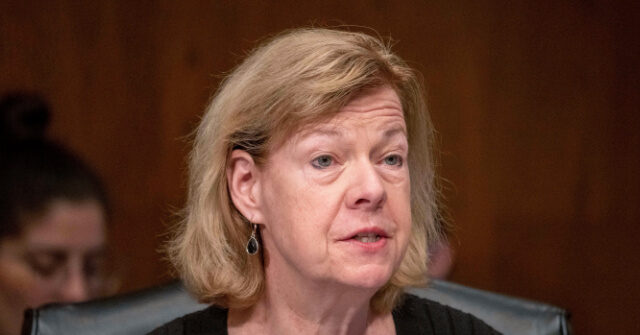During a recent U.S. Senate debate in Wisconsin, Senator Tammy Baldwin (D-WI) asserted that the Senate’s pro-migration legislation was the “toughest border bill” seen in years. This statement came amidst a discussion about the potential revival of that bill, which Baldwin and other Democrats touted as bipartisan. However, this claim is misleading. The proposed legislation was criticized for allowing as many as 5,000 illegal entries into the U.S. each day, a stipulation that starkly contrasts with tougher measures included in a comprehensive border security bill passed by the House, known as H.R. 2.
Baldwin’s characterization of the Senate bill as tough reflects a narrative favored by Democrats, despite the legislation never garnering enough support to pass. During the debate, Baldwin insisted that the bill represented a significant bipartisan effort. In response, Republican challenger Eric Hovde highlighted the bill’s many shortcomings, asserting that it was fundamentally flawed and had already been rejected by the House. Hovde claimed that the legislation was misleadingly framed as a border security bill while effectively redirecting resources towards Ukraine instead. This diversion of focus further undermines Baldwin’s assertion of the bill’s toughness in addressing border security issues.
Hovde articulated his concerns about the bill’s provisions, stating that it would have effectively codified a situation allowing nearly 5,000 illegal immigrants to enter the U.S. daily, without making substantive changes to existing asylum or immigration laws. Specifically, the bill would only trigger a response after those daily encounters reached a certain threshold, which many critics believe does little to truly enhance border security. Hovde’s argument illustrates a fundamental disagreement within the political discourse surrounding immigration and border management in the U.S.
The debate also highlighted a significant difference in the rates of illegal immigration under different administrations. Hovde pointed out that during the final year of Donald Trump’s presidency, the influx of illegal immigrants was significantly lower, with about 300,000 individuals entering. In stark contrast, during Biden’s presidency, the lift of several restrictive executive orders led to a dramatic increase in migration, with over three million crossings recorded in each of his first two years. This surge has been linked not only to increased immigration but also to a rise in drug trafficking and crime, contributing to a broader humanitarian crisis.
Hovde’s critique of Baldwin’s claims underscores the contrasting approaches to border security taken by different parties. He highlighted that the House Resolution 2, which passed in 2023, encompasses robust measures aimed at resuming border wall construction and delivering comprehensive security enhancements. This serves as a powerful counter to Baldwin’s claims and paints a picture that suggests her version of bipartisan legislative efforts fails to address the real challenges posed by illegal immigration and border security.
In summary, the debate over immigration policy remains intensely polarized, with contrasting narratives reflecting broader political beliefs. Baldwin’s assertion regarding the strength of the Senate’s border legislation appears to lack credibility when scrutinized against the tougher measures proposed in House Resolution 2. Additionally, Hovde’s analysis of immigration trends reveals a stark shift in illegal crossings under the current administration compared to the previous one. As the dialogue continues, it is evident that the challenges of immigration reform and border security will remain a contentious issue in U.S. politics.

